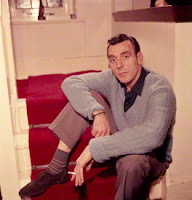Becoming Picasso: Paris 1901 - In context
Super study day at the Courtauld Institute looking at their current exhibition “Becoming Picasso: Paris 1901”. The first lecture was by the curator of the exhibition Barnaby Wright who took us through the hang and described why he had hung various works together, who he chose them and how he got hold of some of them. Next was Lois Oliver from the University of Notre Dame in London talking about why artists and Picasso in particular came to Paris. I thought the speakers in the morning were very good and clear with well-structured talks. Kicking off the afternoon was Rachel Sloan, the Assistant Curator of Works on Paper at the Courtauld Gallery talking about symbolism in Picasso’s work at this time and placing it in an art historic context. This was interesting but I wish she had talked slightly more slowly as it was sometimes a bit difficult follow her argument and particularly to pick up the more technical words. The final talk was by Anne Robbins, the Assistant Curato...














